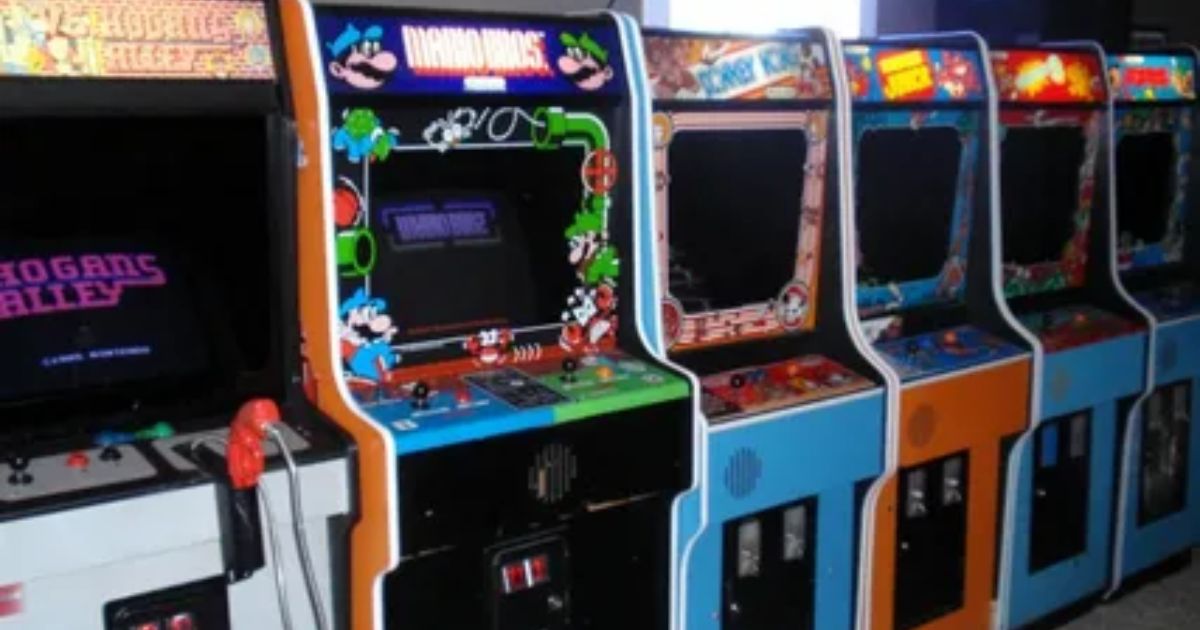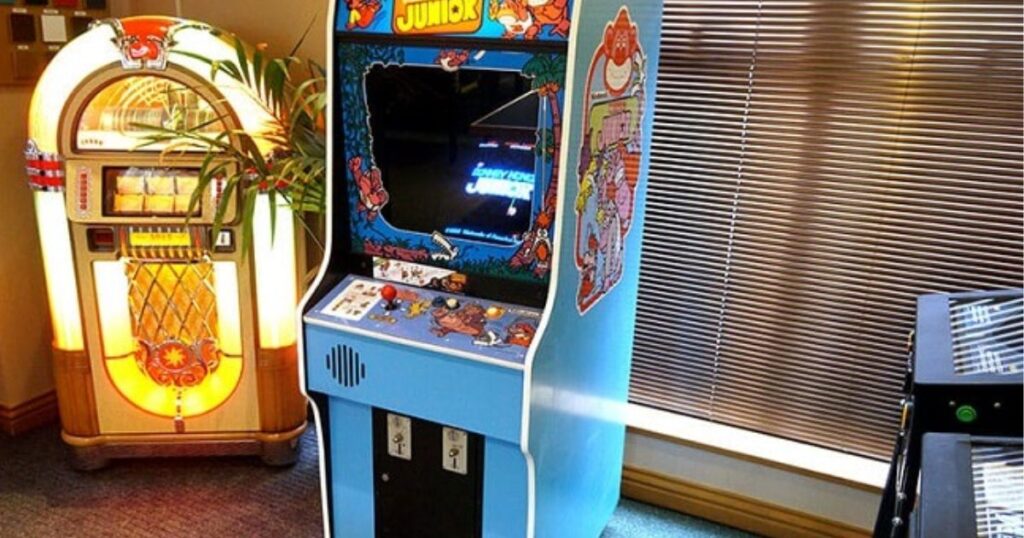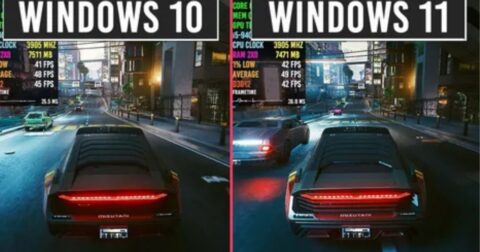Long before high-definition consoles, virtual reality headsets, and cloud gaming, there was the unmistakable glow of arcade cabinets, the sound of jingling coins, and the addictive call of “just one more try.” Arcades weren’t just places to play games; they were social hubs, competitive battlegrounds, and cultural icons. From bustling city arcades to tucked-away corner shops, these machines brought people together in ways that modern gaming still struggles to replicate.The greatest arcade games didn’t just entertain; they shaped gaming history. They taught us about reflexes, strategy, perseverance and how quickly a pocket full of quarters could disappear. Whether you were dodging ghosts in Pac-Man, blasting alien swarms in Space Invaders, or throwing fireballs in Street Fighter II, these games became a part of our collective memory.
In this article, we’ll take a trip down memory lane to explore the greatest arcade games of all time, from the groundbreaking classics of the Golden Age to the timeless hits that still draw crowds today. So grab a token, step up to the machine, and let’s press start.
The late 1970s to the mid-1980s were the Heyday ofArcade Games.
The late 1970s to the mid-1980s is widely considered the Arcade Game Golden Age, a period when arcade gaming exploded in popularity, creativity, and cultural impact. This was the era when arcades transformed from niche entertainment spots into mainstream phenomena, drawing crowds of all ages.It all started with trailblazers like Space Invaders (1978), which introduced the world to wave-based shooting and addictive high-score chasing. Not long after, Pac-Man (1980) turned a yellow circle with a voracious appetite into an international icon, proving that arcade games could appeal to everyone, not just sci-fi enthusiasts. Meanwhile, Donkey Kong (1981) introduced the world to a certain Italian plumber named Mario, marking the birth of one of gaming’s most beloved franchises.
During this time, the technology powering arcade cabinets evolved rapidly. Developers experimented with new graphics, innovative controls, and unique gameplay concepts from vector-based visuals in Asteroids (1979) to the first large-scale multiplayer cabinets. Top 10 Best Gamecube Games of All Time That Defined a Generation The arcade floor became a melting pot of ideas, with each new release trying to outdo the last in excitement and spectacle.The Golden Age was more than just about the greatest arcade games of all time; it was about the experience. The flashing lights, pounding music, and the thrill of seeing your initials climb the leaderboard created an atmosphere unlike any other. This was the time when gaming truly stepped into the cultural spotlight, inspiring merchandise, TV shows, movies, and a global community of players.By the mid-1980s, the momentum began to shift with the rise of home consoles, but the legacy of the Golden Age still resonates today. Many of the titles born in this era remain staples of gaming history, inspiring modern remakes, spin-offs, and endless nostalgia.

Top Arcade Games of All Time
Over the decades, countless arcade titles have captured the hearts of gamers, but only a select few have achieved legendary status. These most popular arcade video games didn’t just dominate the arcades; they shaped gaming history and influenced generations of developers. Here’s a look at some of the greatest arcade games ever made.
1. Pac-Man (1980)
Few video games are as universally recognised as Pac-Man. Created by Namco, this maze-chasing masterpiece was a cultural phenomenon, appealing to both casual and hardcore gamers. With its simple premise, eat all the dots while avoiding colourful ghosts, Pac-Man became an icon of the 1980s and remains a symbol of arcade gaming to this day.
2. Space Invaders (1978)
The game that kickstarted the arcade revolution, Space Invaders, put players in control of a laser cannon, blasting wave after wave of descending alien invaders. Its escalating difficulty and heart-pounding gameplay set the standard for the shooter genre, while its pixelated aliens became pop culture symbols.
3. Donkey Kong (1981)
Before Mario was a household name, he was “Jumpman” in Donkey Kong. Players had to navigate ladders, avoid rolling barrels, and rescue a damsel in distress from the giant ape. The game’s platforming mechanics laid the groundwork for the entire platformer genre.
4. Street Fighter II (1991)
Capcom’s Street Fighter II redefined the genre of fighting games, with its wide range of characters, distinctive moves, and competitive spirit. Its introduction of combo mechanics and balanced gameplay made it a mainstay in arcades for years and launched a thriving competitive scene.
5. Galaga (1981)
A sequel to Galaxian, Galaga took space shooters to the next level with its challenging enemy patterns, “dual fighter” mechanic, and addictive high-score chasing. Its fast-paced gameplay kept players coming back for “just one more round.”
6. Mortal Kombat (1992)
Known for its digitised graphics and over-the-top fatalities, Mortal Kombat pushed boundaries in both gameplay and controversy. Its brutal style and memorable characters cemented its place as a fighting game legend.
7. Asteroids (1979)
Atari’s Asteroids used vector graphics to deliver a visually striking and endlessly replayable space shooter. Windows 10 vs Windows 11: Which Is Better for Gaming in 2025 Players rotated and thrust their ship while blasting apart asteroids, avoiding collisions, and chasing high scores.
8. Dance Dance Revolution (1998)
Konami’s Dance Dance Revolution brought rhythm gaming into the arcade spotlight. Players stomped on directional arrows in time with music, combining gaming with a cardio workout and creating a competitive dance culture.
9. The House of the Dead (1996)
A pioneer in the light-gun shooter genre, The House of the Dead delivered zombie-slaying thrills and cinematic storytelling. Its branching paths and fast-paced action kept players pumping coins into the machine.
10. NBA Jam (1993)
NBA Jam wasn’t just basketball; it was basketball on turbo mode. Featuring exaggerated dunks, Dead Space Review Embargo: What to Expect and When catchphrases like “He’s on fire!” and two-on-two gameplay, this Midway classic was pure arcade fun.
Honorable Mentions

While the games in our main list earned their spot through massive cultural impact and timeless gameplay, countless other arcade classics also deserve recognition. These titles may not have taken the number-one spot, but they left their own lasting marks on gaming history.
Ms. Pac-Man (1982)
Often considered superior to the original, Ms. Pac-Man added new maze designs, more intelligent ghost AI, and faster gameplay. Many players found it even more challenging and engaging than Pac-Man.
Frogger (1981)
This Konami classic challenged players to guide a frog across busy roads and treacherous rivers. Its simple premise and addictive gameplay made it a family-friendly favourite.
Metal Slug Series (1996–)
Known for its hand-drawn animations, humour, and chaotic run-and-gun action, Street Fighter 6 | Street Fighter In Online Metal Slug became a staple for cooperative arcade play.
Time Crisis (1995)
Namco’s Time Crisis revolutionised light-gun shooters with its foot pedal cover system, adding a layer of strategy to intense firefights.
Centipede (1980)
This fast-paced shooter tasked players with blasting their way through waves of segmented centipedes, mushrooms, spiders, and other critters, offering quick, high-energy gameplay.
Tekken 3 (1997)
One of the most beloved 3D fighting games, Tekken 3 brought fluid animations, memorable characters, and deep combat mechanics to the arcade floor.
Why Arcade Games Still Matter Today

Even in an era dominated by powerful home consoles, PC gaming, and mobile apps, arcade games continue to hold a special place in the hearts of gamers. They represent the roots of modern gaming, a time when gameplay had to be instantly engaging, easy to learn, and hard to master. This design philosophy still influences game developers today, proving that great gameplay never goes out of style.Arcades also offer something that online gaming can’t fully replicate: the social experience. Standing shoulder-to-shoulder with a friend (or rival) at a cabinet, sharing laughter, high-fives, or competitive banter, A Deep Dive into Cyberpunk 2077’s Turf Wars Arcade Game creates memories that stick. Arcade machines encourage face-to-face interaction, making them timeless hubs for community and competition.
In recent years, retro gaming bars, arcade-themed cafés, and events like “free play nights” have sparked a resurgence in arcade culture. Classic cabinets are being restored, re-released, and even emulated for modern consoles, allowing new generations to experience the thrill. Games like Pac-Man, Street Fighter II, and Galaga are now just a download away, keeping their legacy alive.Ultimately, arcade games matter because they remind us that gaming is about fun first. Whether you’re chasing a high score, trying to beat a boss on one credit, or just reliving childhood memories, arcade games deliver pure, unfiltered joy, the same magic that hooked players decades ago.
Conclusion
Arcade games are more than just entertainment from a bygone era; they’re the foundation of modern gaming culture. They taught developers the art of creating instantly engaging gameplay, introduced characters who became pop culture icons, and brought people together in a way few other pastimes could. From the pixelated battlefields of Space Invaders to the dance pads of DDR, these games proved that fun isn’t about fancy graphics or sprawling storylines; it’s about the thrill of the challenge and the joy of play.
While technology has evolved, the heart of arcade gaming beats just as strongly today. Retro arcades, gaming expos, and even digital re-releases keep these classics alive, inviting new generations to experience the same magic that once lit up dimly lit game rooms. best arcade machines of all time aren’t just pieces of gaming history; they’re timeless adventures that will keep inspiring, challenging, and entertaining for decades to come.So, whether you’re a veteran gamer with pockets full of nostalgic tokens or a newcomer curious about where it all began, one thing’s sure in the world of arcade games: it’s always “Insert Coin to Continue.”
FAQ
1. is considered the first arcade game?
Pong (1972) was the first arcade video game to achieve commercial success. Atari, though earlier examples like Computer Space (1971) came before it.
2. Which arcade game made the most money?
Pac-Man is widely regarded as the highest-grossing arcade game of all time, earning billions in quarters since its 1980 release.
3. Are arcade machines still being mWhatade today?
Yes. While less common, new arcade machines are still produced, often featuring modern graphics, interactive controls, and multiplayer experiences.
4. Can I play classic arcade games at home?
Absolutely. Many classics are available on modern consoles, PCs, and dedicated retro gaming systems, and emulators can also replicate the arcade experience.
5. Why were arcade games so popular in the 1980s and 1990s?
Arcades offered cutting-edge graphics, competitive multiplayer, and social interaction long before home consoles could match that experience.






